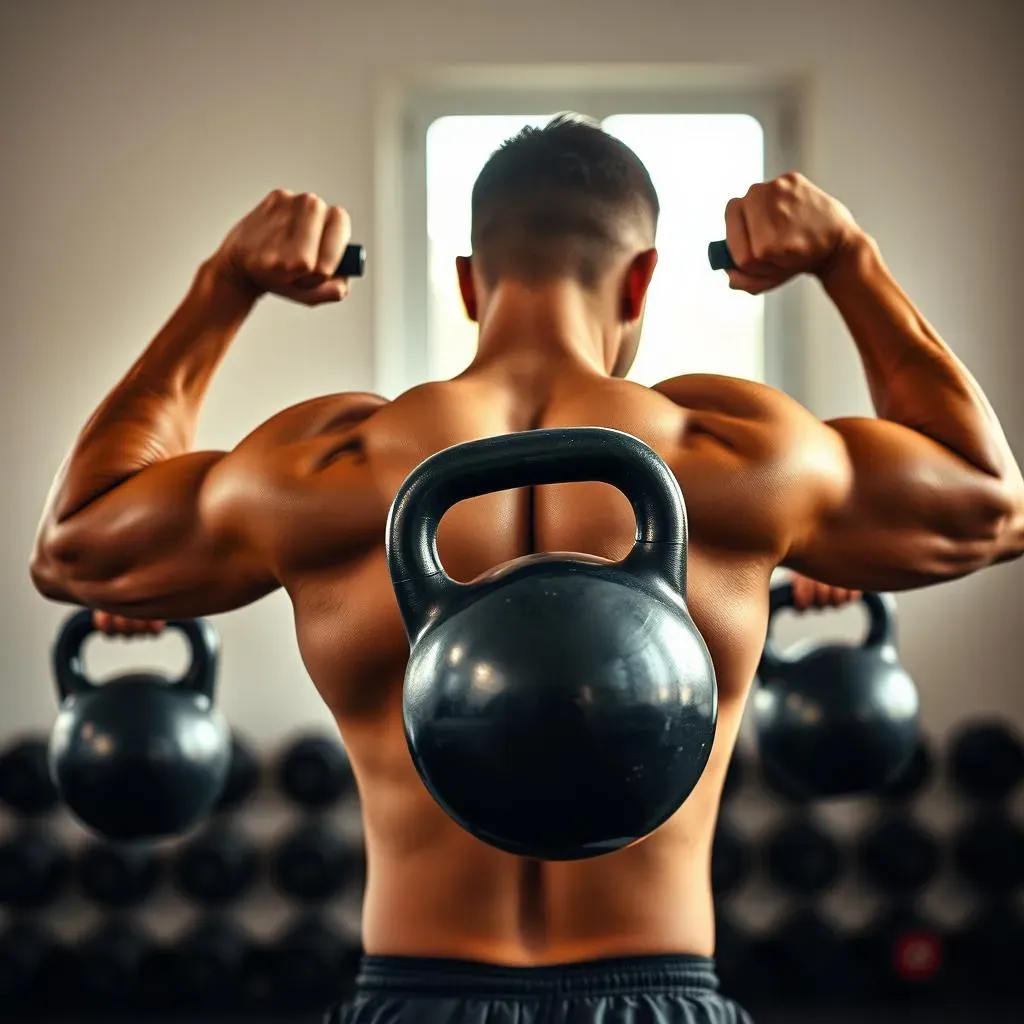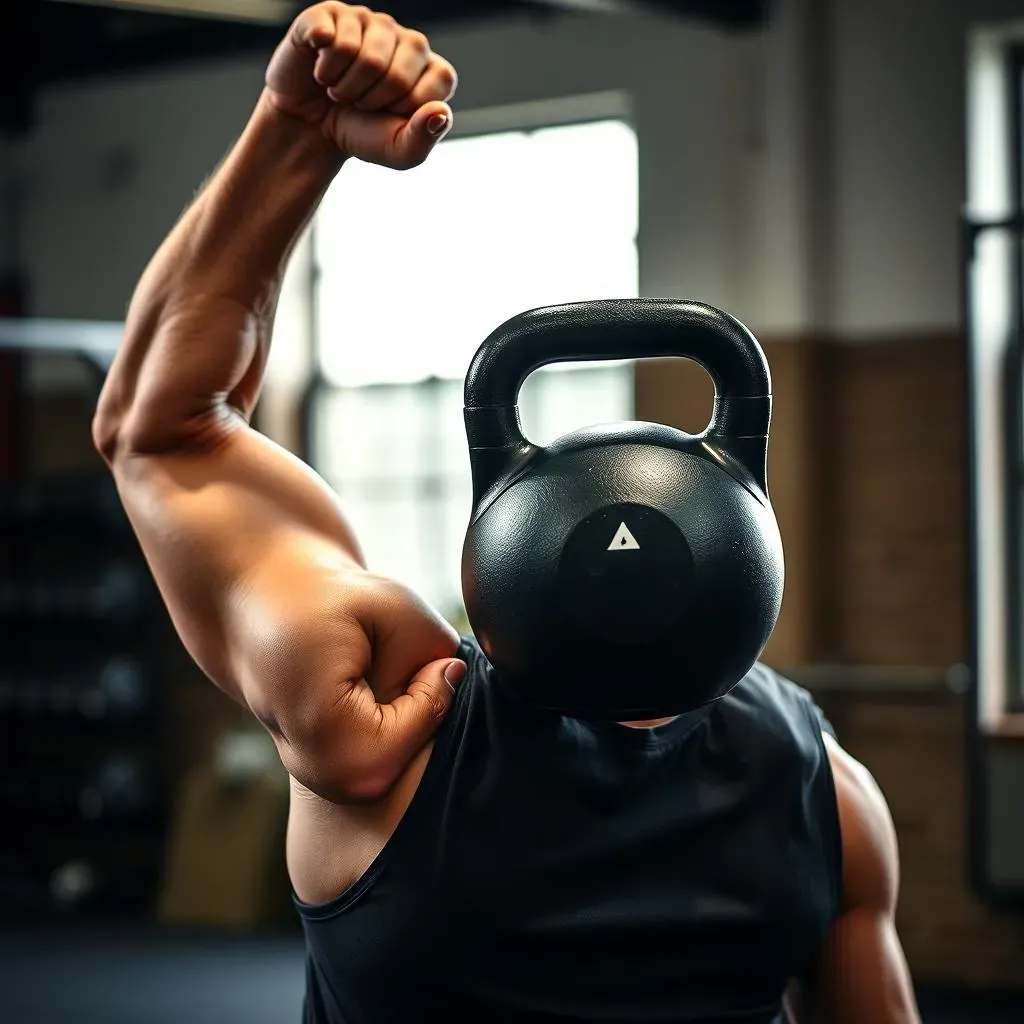Table of Contents
Ever wondered if those cannonball-shaped weights could actually do something for your shoulders? Well, you're not alone! Many people ask, "are kettlebells good for shoulders?" and the answer isn't a simple yes or no. It's more like a "heck yes, but with a few important things to keep in mind." We're going to explore why kettlebells can be fantastic for building shoulder strength, mobility, and stability. Think of your shoulders as a complex machine—they need the right kind of training to work their best. This article will be your guide, breaking down the best kettlebell exercises, showing you how to use them safely, and helping you understand why this kind of training could be a game-changer for your upper body. Get ready to learn how to make those kettlebells work for you, and not against you, focusing on exercises that build a strong and healthy shoulder foundation.
Why Kettlebells Are Great for Shoulders

Why Kettlebells Are Great for Shoulders
Okay, so you're curious about why kettlebells are popping up everywhere, especially when it comes to shoulder work? It's not just a fad; there's some real science behind it. Unlike dumbbells, where the weight is evenly distributed, kettlebells have an offset center of gravity. This means your shoulder muscles have to work harder to control the weight, firing up all those stabilizing muscles you didn't even know you had. Think of it like this: a dumbbell is like carrying a suitcase, while a kettlebell is like carrying a wonky bucket of water – you need to engage more to keep it steady. This constant challenge is what makes kettlebells so effective for building strong and resilient shoulders, especially when you’re aiming for real-world strength, not just gym numbers.
Top Kettlebell Exercises for Shoulder Strength

Top Kettlebell Exercises for Shoulder Strength
The Foundation Builders
Alright, let's get into the good stuff – the actual exercises! Before you start swinging kettlebells like a pro, it's crucial to nail the basics. We’re not jumping straight into advanced moves here, we're talking about building a solid foundation first. Think of it like constructing a building, you wouldn't start with the roof, right? You need a strong base. That means focusing on exercises that improve shoulder stability and mobility. These aren't the flashiest moves, but trust me, they're essential for long-term shoulder health and strength. These moves help activate the smaller, often neglected muscles around your shoulder joint, making sure everything is working together. We're talking about moves like the Straight Arm Overhead Kettlebell Hold, which might seem simple, but it’s a sneaky way to build a lot of shoulder control.
Then we move to the Kettlebell Arm Bar, this exercise is like a gentle massage for your shoulder joint, helping to improve mobility and stability. It's not about lifting heavy, it’s about control and understanding where your shoulder is in space. Another great one is the Kettlebell Windmill. It's a bit more complex, but it’s a fantastic way to work on shoulder stability while also improving your core strength. Remember, we are not chasing numbers here, we are building a solid foundation. These exercises are not about how much weight you can lift, it’s about how well you can control it and they’re crucial before moving on to more complex movements.
Exercise | Focus | Why it's Important |
|---|---|---|
Straight Arm Overhead Kettlebell Hold | Stability | Builds shoulder control and endurance. |
Kettlebell Arm Bar | Mobility & Stability | Improves joint health and proprioception. |
Kettlebell Windmill | Stability & Core | Strengthens shoulders and core together. |
The Power Moves
Once you've got the foundational exercises down, it's time to move on to the more dynamic moves that will really challenge your shoulder strength. These exercises are where you'll start feeling that burn and seeing some serious results. We’re talking about moves that not only build strength but also improve your overall athleticism. The Kettlebell Clean is a must-master. It's the starting point for many other pressing exercises and builds explosive power in your shoulders and upper back. It's not just about lifting the weight, it's about technique and coordination. When done correctly, this exercise will be a game changer.
And of course, we have to talk about the Kettlebell Shoulder Press. This is where you’ll really feel the strength gains. But remember, you need to have a solid base before attempting this exercise. It demands a lot from your shoulder stabilizers, so make sure you've mastered the foundational exercises first. And for the real challenge, there's the Bottoms-Up Kettlebell Press. This exercise is not for the faint of heart. It requires incredible stability and control, as you're pressing the kettlebell with the bell facing up. It will not only help build strength but also improve your grip. These power moves are where you'll transform your shoulders into strong, resilient, and capable tools.
- Kettlebell Clean: Builds explosive power and prepares for presses.
- Kettlebell Shoulder Press: Increases overall shoulder strength.
- Bottoms-Up Kettlebell Press: Demands high stability and control.
How to Safely Train Shoulders with Kettlebells

How to Safely Train Shoulders with Kettlebells
Start Slow and Smart
Alright, let's talk safety, because no one wants a messed-up shoulder. When you're starting with kettlebells, the golden rule is to take it slow. Don’t jump into heavy weights or complex moves right away. Think of it like learning to ride a bike – you wouldn't start on a mountain bike trail, would you? You’d start with training wheels and flat ground. The same goes for kettlebells. Begin with lighter weights and focus on mastering the basic movements, like the ones I just talked about. It's not about how much you can lift, it's about how well you can control the weight. This is the time to build a good foundation and learn proper form. Rushing into things is a one-way ticket to injury town, and trust me, you don’t want to go there.
Pay close attention to your body and the signals it’s sending you. If you feel any sharp pain, stop immediately. It’s okay to feel some muscle soreness, but pain is a red flag. Don't push through it. Respect your body, and it will reward you with stronger, healthier shoulders. This is a journey, not a race, so be patient and consistent. The key is to gradually increase the weight and complexity as you get stronger and more comfortable with the movements. Start with a weight that allows you to perform the exercises with perfect form, and then slowly increase it over time. It's better to start too light than too heavy.
Focus on Form, Not Weight
This might sound like a broken record, but proper form is absolutely crucial, especially with kettlebells. It’s much more important than the amount of weight you’re lifting. Lifting with bad form is like building a house on a shaky foundation – it might look okay at first, but eventually, it’s going to collapse. When you’re doing your kettlebell exercises, make sure to keep your core engaged, your back straight, and your movements controlled. Don’t let the weight swing you around; you should be controlling the kettlebell, not the other way around. This is where a good mirror can be your best friend, or even better, a coach or experienced friend who can give you feedback on your technique. They can spot things you might not notice yourself, and they can help you make sure you're doing the exercises correctly.
Remember, you're not just lifting weights; you're training your body to move correctly. This means focusing on the quality of each repetition, not just the quantity. It's better to do fewer reps with good form than a bunch of reps with bad form. Each rep should be deliberate and controlled. This will not only help prevent injuries but also make your workouts much more effective. It's like the difference between playing a musical instrument with proper technique versus just banging on the keys – one produces music, and the other just noise. You want to make music with your body, so focus on form, and the results will come.
Safety Tip | Why It Matters |
|---|---|
Start with lighter weights | Prevents injury and allows focus on form. |
Master basic movements first | Builds a solid foundation for complex exercises. |
Engage your core | Stabilizes your body and protects your lower back. |
Control the weight | Prevents jerky movements and injury. |
Focus on quality over quantity | Ensures each rep is effective and safe. |
Listen to Your Body and Progress Gradually
Finally, the most important piece of advice I can give you is to listen to your body. It’s the best coach you’ll ever have. If you’re feeling pain, fatigue, or anything that doesn’t feel right, take a break. Don’t try to push through it. It’s okay to have some days where you don’t feel your best. Rest and recovery are just as important as the workouts themselves. They allow your muscles to repair and grow stronger. Think of it like recharging your phone – you can’t expect it to work properly if you never plug it in. Your body is the same way.
And when you’re ready to progress, do it gradually. Don’t try to increase the weight, reps, or complexity of your exercises all at once. Make small changes over time, and give your body a chance to adapt. This is how you’ll build long-lasting strength and avoid getting injured. Remember, it's not about how fast you can progress, but about how consistently you can progress safely. The goal is to make this a long-term habit that you can enjoy for years to come, not a short-term sprint that leads to burnout or injury. Be patient with yourself, celebrate the small victories, and enjoy the journey of building stronger shoulders with kettlebells.